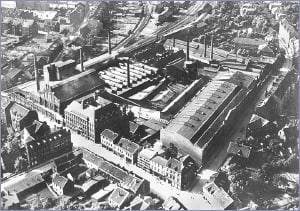The urban form location debate
The writer presents a reader detailed study and analysis of the research debate of urban form in Germany. He divides the paper into three parts. First, the urban form- location studies. Second, the urban form–function studies. Third, the urban form- structure studies. The first part covers the period before the industrial revolution and within it. He shows that most research and studies were concerned about location factor of the urban form. Researchers studied street to understand its effect on selecting locating building, villages, and towns within the urban form. Moreover, researchers analyzed many areas in the urban form to find an answer for the debate of why this site not other to build on? The street was the main element subject of these studies; its shape, size, and effect on locating specific buildings and activity and vise-versa. A researcher studying the street layout found out that studying the street layout as a standalone element is not sufficient for the urban form study. A university professor introduced a treaty to resolve the path and procedure to study the urban form accordingly.
The urban form-function debate
Second part of the paper discusses the urban form-function. Researchers studied the urban form-function relationship during the world war. The main element of these studies is street patterns. Researchers wanted to understand the relationship between street shape, size, and pattern and villages and town’s growth. Builders select to build a building in a certain location in villages and towns. Builders certainly specify site based on its function but street pattern affects this selection procedure. Researchers wanted to identify the function of building and street relationship and how these elements affect the growth of a town to create an urban form. The results are the random growth and unorganized street pattern and size. A researcher in the academic field introduced a treaty to give order for this growth. The treaty set out guidelines to the way streets, blocks, open space, and plots should be built.
The urban form-structure debate
Third part of this paper discusses the urban form-structure. Researchers studied this relationship post-war period. The studies were more complex that the previous periods because it comprise larger elements of the urban form. The elements making the urban fabric in towns and their interrelationship include street pattern, building blocks, open spaces in towns, and all these elements together affect to adjacent towns. Researchers wanted to identify any character change and its influence on the development of other elements of the urban fabric. They wanted to make this character an indicator to measure the development stages in the urban fabric. This period studies were on a large scale of the urban function and urban structure. Researchers from other countries UK, USA influenced this period studied by defining elements like crafts and economics effect on the formation of the urban form. Building character and site identity was two main additional elements added to the study of the urban form in Germany in this period.
Criticism
Regardless of the smooth and coherent information and discussion in this paper. there are many catches that a reviewer could discuss and argue its benefit to the development of the related profession and to serve professional practice. I am going to pose some questions in order to discuss these catches on this paper.
Why geographers were interested in studying the urban form?
What were the outcomes of this research to develop towns?
How did this research assist related fields of creating or building towns in improving their work, methods, and tools?
Why other related fields researchers are not involved in theses research?
Did geographers pay any attention to other fields of research and their outcomes?
How did technology development in these three decades contribute to their understanding and research?
The article lacks hypothesis in studying the paper subject. The author shows the gradual development in studying the urban form. He does not present evidence supporting his ideas. The paper researcher gives not detail on other countries research on the development of the German urban form studies. The article does not in its content contribute to our knowledge about studying the urban form because it’s mainly relaying on visual interpretation. The reviewer realize that the paper content is descriptive without providing the reader what is the tools, techniques, methods in studying the urban form .the article findings and conclusion is a repetition of the abstract of the article .The author do not present any problem in the urban form studies he presented in three decades time, or he is not solving any problem or obstacles facing researchers studying the urban form.
Towns and villages were built to serve certain function. There are many fields involved in the process of building towns and villages. Transport engineering is one of the main fields that affect the creation of towns. Economics and specifically land economics is another field affects the creation and formation of the urban form. Local character and national identity and many other architectural elements as well affect the creation of the urban form. Many professions are involved in the process of the urban form creation like architects, transport engineers, and economics specialist. Because these researches were done by geographers and they lack any knowledge about other fields mentioned leads us to doubt the accuracy of the research results.
you can download the original paper from this website if you are interested.

Leave feedback about this